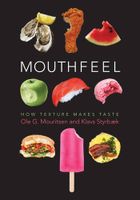Label
All
0
Clear all filters
🍜 Check out our Noodle bookshelf, and save 25% on ckbk Premium Membership 🍜
Gelatin
Appears in
By Ole Mouritsen and Klavs Styrbæk
Published 2017
Gelatin is a protein found in collagen, which is the main component of the connective tissue that gives structure to all animal tissue. In mammals, it makes up 25–35 percent of the total protein mass. Most of the collagen in an animal is found in the skin and bones, rather than in the muscles. The word “collagen” is derived from the Greek word kólla, meaning “glue,” which in this case is gelatin. Unlike collagen, gelatin is soluble in water.
The strength of the collagen that forms connective tissue depends on the degree to which its protein molecules are chemically connected, a process known as cross-linking of tropocollagen molecules. When an animal exercises its muscles, the collagen becomes stronger, making the muscles tougher with age. Similarly, those muscles that are required to perform heavy work are also tougher. Newborn animals contain loosely bound collagen, which easily breaks down into gelatin. Meat from younger animals is more tender, not because it has a lower collagen content, but because the collagen has fewer cross-linkages.
Part of
Advertisement
Advertisement
The licensor does not allow printing of this title


